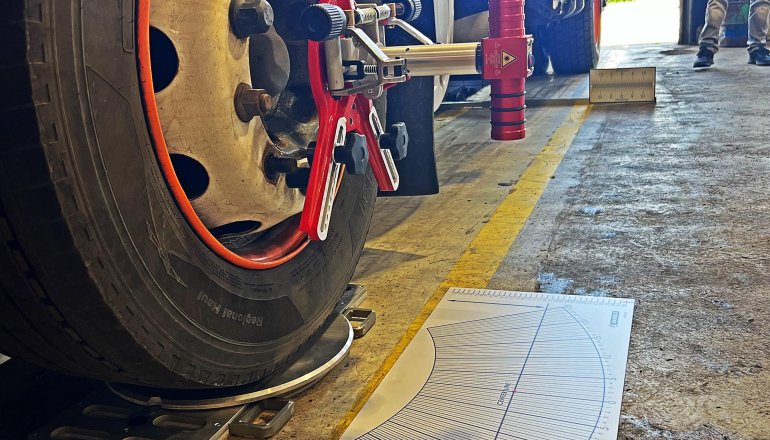
Truck and Trailer Laser Wheel Alignment
HAWEKA AXIS 500
Truck Wheel Alignment: The Key Difference from Passenger Cars
The wheel alignment process for trucks is similar to that of passenger cars, but there is one major difference.
For passenger cars, the rear axle serves as the reference point, and the front wheels are aligned accordingly.
For trucks, however, the chassis symmetry axis is the reference point. The alignment must be adjusted in relation to this axis to prevent crab steering, where the front and rear of the vehicle do not track in the same line.
If truck wheel alignment is performed using passenger car equipment, it aligns the front wheels based on the rear axle instead of the chassis symmetry axis, leading to improper tracking.
While it is possible to align a truck using such equipment, achieving perfect wheel tracking requires calibration with a specialized truck wheel alignment system.
This is why we have invested in one of the best truck wheel alignment devices available on the market—so we can provide maximum precision and quality for those who expect more than just an "it should be fine" result and instead demand perfection.


 Ajánlatkérés
Ajánlatkérés  Tire Fitting and Puncture Repair
Tire Fitting and Puncture Repair  Truck and Trailer Laser Wheel Alignment
Truck and Trailer Laser Wheel Alignment  Comprehensive Air Conditioning Repair and Refilling
Comprehensive Air Conditioning Repair and Refilling  Truck and Trailer Diagnostics
Truck and Trailer Diagnostics  Superstructure Repairs
Superstructure Repairs  Comprehensive Electrical Repairs
Comprehensive Electrical Repairs  Kingpin Refurbishment
Kingpin Refurbishment  Brake and Suspension Repairs
Brake and Suspension Repairs  AD BLUE Repair
AD BLUE Repair  Major Component Repairs
Major Component Repairs  Preparation for Technical Inspection and Full Administration
Preparation for Technical Inspection and Full Administration 